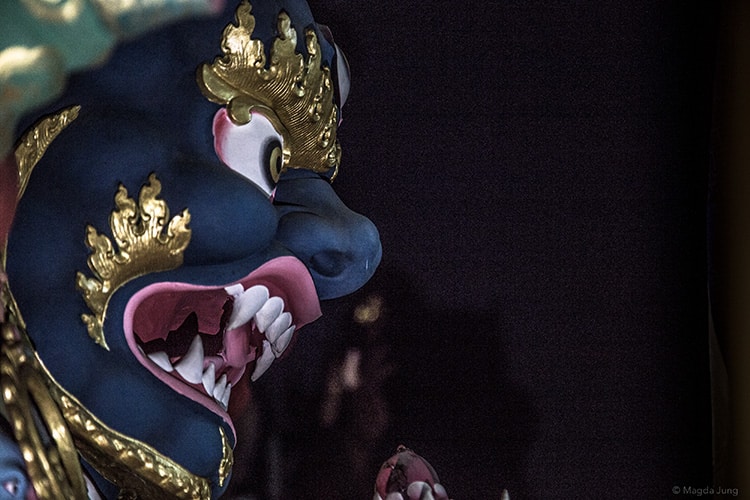Is Buddhism Pessimistic?
Category: Buddhist Meditation | Buddhist Path

What Are The Negative Beliefs Of Buddhism? (Impermanence Explained)
Buddhism is sometimes accused of having a pessimistic worldview. After all, the first of the Four Noble Truths is commonly translated as ‘life is suffering.’ Let’s explore that over-simplistic translation. The idea that Buddhism is pessimistic lacks a complete understanding of what the Buddha really taught.
Examples of seeming pessimism in Buddhism are easy to find, especially if one is highlighting partial teachings, absent their full context. Buddhist teachings on suffering, impermanence, and non-attachment are often mistaken as negative, pessimistic or nihilistic.
Is Life’s Innate Nature Suffering?
The most pervasive example of pessimism in Buddhism may be the misunderstanding of the First Noble Truth. The first of the Four Noble Truths is that dukkha exists. When translated too simplistically, some hear ‘nothing but suffering exists.’ But dukkha, a Pali word, also connotes impermanence, dissatisfaction, discontentment or imperfection.
A more accurate description of the first noble truth might be that ‘all worldly phenomena, or conditioned things, are ultimately unsatisfying because all of it will someday change.’ Seeking lasting contentment in impermanent things keeps us in a cycle of suffering, otherwise known as samsara.
The Buddha indeed presents a case for hopelessness by pointing to the unsatisfactoriness of the unenlightened life. We cannot hope to find a source of happiness anywhere outside of our own hearts and minds. But by encouraging disillusionment in the shiny objects we have mistaken as a source of joy, the Buddha inspires us to look elsewhere. We discover that true happiness and lasting contentment are indeed possible. The remaining Four Noble Truths point the way.
Is Impermanence A Negative Thought?
It’s a downer to hear the truth that all conditioned things, our new home, our new car, and even our own bodies, will someday become old and a source of hardship and pain. It doesn’t feel good to be reminded that everyone we love, including our pets and family, will someday die and leave us, or that we will certainly die. The Buddhist teachings on impermanence can be uncomfortable. And yet, they are also the source of our liberation.
Buddhists meditate on death not because they are negative and gloomy, but because the discomfort that arises motivates a more profound appreciation for life. When we keep the truth of impermanence close, the present moment becomes far more vibrant, awe-filled and joyous. We might also question how we would like to spend this precious moment, knowing it could be our last.
Is Nirvana A State Of Nothingness?
The Buddha taught that misunderstanding reality is at the root of our suffering. The good or bad we experience is a reflection of our own minds. Unable to accept the truth of impermanence, we cling to what brings us pleasure and feel great pain when things don’t last forever. Confused about the source of happiness, we attempt to control what comes into our lives. We refuse to accept the way things are and then wonder why we’re plagued with discontentment.
Suffering is minimized when we let go of craving and aversion and accept reality as it is. Some confuse this teaching on non-attachment as a directive to become indifferent, uncaring, absent or to separate oneself from people, places and things. We may hear that reality does not exist the way that we think that it does, and mistakenly hear, ‘reality doesn’t exist.’
But entering nirvana does not entail disappearing from this world or disconnecting from our lives and loved ones. Nirvana is present with us here and now, waiting to be re-discovered. Nirvana both includes and transcends our ordinary human experience.
In Mahayana Buddhism, we go a step farther and begin to understand that our very essence is not at its core dukkha or disatisfaction, but it is Buddha nature itself. In fact all sentient beings have the inherent qualities of Buddha built in.
How is Buddhism Not Pessimistic?
The pessimist believes the world leans toward evil and that negative outcomes are favored. And from the perspective of the unenlightened mind, outcomes may indeed not look so good. In our current state of ignorance, craving and aversion keep us habitually repeating unskillful behaviors that plant negative karmic seeds.
In Buddhism, however, philosophical pessimism is not an end-point but a teaching tool. The Buddha taught disillusionment to help us. It’s this hopelessness of the eight worldly concerns that motivates us to seek the true cause of happiness, joy and positive outcomes. Until we’ve thoroughly examined the limited potential to be happy in samsara, we’ll keep being lulled by the illusion that it may have something for us that’s either easier to access or better than nirvana. And so in seeking a way out from this hopelessness, we turn to the eightfold path, overcoming pessimism through action. This action includes a close examination of our pessimistic views, both in meditation and in our daily lives.
What we see is that pessimism and optimism are mutable. Nothing is either all good or all bad. Both perspectives arise within our own minds. What’s more, we have the extraordinary capacity to change our minds, to see a world that’s not negative or positive, but totally, completely and wholly real.








